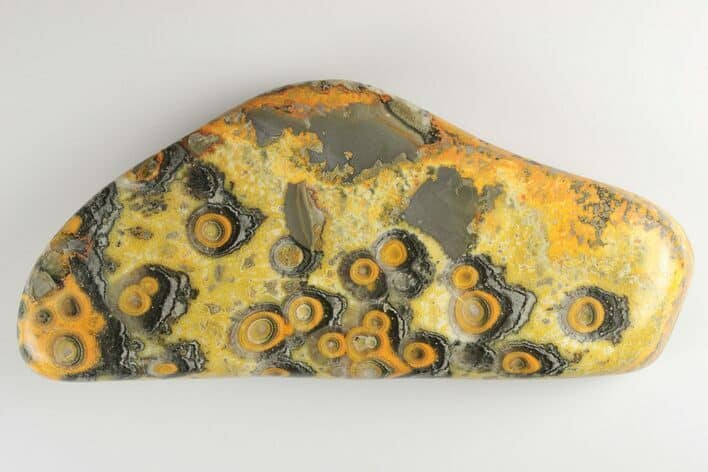There’s nothing better than making our homes and gardens look more attractive. We may use canvas prints indoors that display custom photos or get the advice of a landscape gardener. Decorative rocks are another great way to bring color and life into your living space. They can be used inside or outside, on the ground or in water features.
They are very versatile because they come in many different colors, shapes, sizes and textures. If this is a subject you’re interested in, read on because this article will teach you all you need to know.
What They Are
Decorative rocks are stones that have been shaped or cut to look like other things. They are often used in landscaping, but they can also be placed indoors for decorative purposes. If you want to learn more and to view some examples, head over to the internet. If you’re interested in polished bumblebee jasper you can find out where it’s found, how it forms and whether it’s toxic. It’s also possible to buy rocks from Indonesia, and fossils, trilobites, megalodon teeth, fish fossils, ammonites, crystals and minerals etc.
For some bedtime reading also check out dinosaur fossils, spinosaurus teeth, petrified wood, geodes, amethyst, pyrite, labradorite, malachite, septarian and crystal skulls.
How They Can Be Used Outdoors
Decorative rocks can be placed in flower beds to create borders, or they can simply be put around plants to add color and contrast. You can also use decorative rocks on patios, walkways and driveways. They also serve as protection from weeds that might otherwise invade gardens and cause damage. Decorative rocks need very little maintenance and will last for years without needing replacement.
Once you decide what type of decorative rock is right for your landscaping needs, it’s important not to go overboard with the quantity you use. On garden beds, one large stone for each plant is generally sufficient because you won’t want the rocks to trap water around them and cause the plants to rot.
How They Can Be Used Indoors
Decorative rocks are perfect for a range of home decorating projects. You can use them to enhance unsightly areas or to fill shelves and crevices.
They’re also great for making an ugly fireplace appear more aesthetically pleasing or hiding other areas that you do not want guests to see easily when they enter your house.
Decorative Rocks For Landscaping
There are a number of different types of decorative rocks available for homeowners to utilize in their landscaping projects. Some examples include gravel and slate, but the most popular type is known as “river rock.” It has a number of benefits that make it an attractive choice to homeowners looking to add some style to their garden projects. They include its durability and affordability when compared with other options.
River rock is also resistant to cracking due to temperature fluctuations in your yard during the winter months. It can be purchased at home improvement stores or by visiting specialist landscape suppliers. Before you buy, make sure that this material isn’t easily found free of charge along stream beds around your city!

How Strong It Is
Many people assume that decorative rocks will break easily under the weight of a car tire or human foot, but this is not usually the case. Some types of rocks can actually support large amounts of weight without breaking apart completely.
That being said, not all decorative stones are suitable for every situation. This especially applies where you need some heavy-duty strength and durability from your ground coverings. Natural stone tiles may offer better protection against weather elements than most manmade alternatives. If you need a flooring solution for your outdoor space, be sure to research the best type of stone before making any final decisions.
Maintenance Requirements
Many people assume that rocks will require an extensive amount of upkeep in order to stay clean and shiny -fortunately, this is not true! While it’s certainly possible to use harsh chemicals on decorative stones, many homeowners choose gentler options like warm water mixed with baking soda or vinegar instead. Be sure to find out which method works best for cleaning your specific types of decorative rock before going shopping.
If you have pets, make sure that their waste will be cleaned up so it does not come into contact with any crushed stone material used outside. This is because it could become dangerous if it was ingested by animals or children who play in the yard.
Where To Buy Them
You can buy decorative rocks just about anywhere, including your local hardware store or garden center.
However, if you want something a little more specific there are online websites that sell rocks with certain colors and shapes so they fit better into the landscape design plan for your home. There are even companies that make custom sizes based on pictures that are sent via email.
Natural And Man-Made Stones
Natural rocks include granite, limestone and sandstone (also known as builders stone). These natural stones have been used to build structures for thousands of years due to their durability. Sometimes they are too heavy for walls attached only by drywall (not studs). If this happens, support them using wire mesh stapled across the frame behind the wall – and do this before hanging on nails/screws, etc.
Man-made decorative rock is a very popular choice because it looks so real – it’s almost indistinguishable from natural rock. Man-made or fake decorative rocks come in many different shapes, sizes and colors and you can buy them without breaking the bank (or your back when it comes time to install it!). In addition, these types of faux finishes can be found everywhere these days including on countertops, fireplace surrounds, flooring and walls. These natural-looking rocks are so versatile that they can be used both indoors and outdoors.
You now know a lot more about decorative rocks, be it the different kinds or their uses indoors and outdoors. Once you’ve bought some, look after them well and in turn they will provide aesthetic value wherever they are placed.

